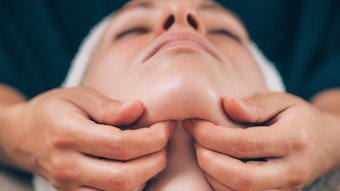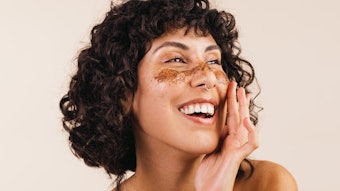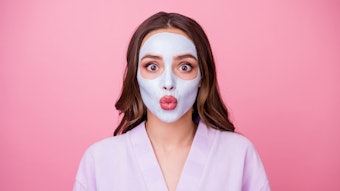
We truly are a global society, and being adept in working with diverse skin types is a tremendous asset in the treatment room. It is not enough, however, to create a treatment plan based on the skin’s pigmentation alone. Just taking into account skin tone–fair versus dark–doesn’t provide us enough information to create an effective treatment plan. This is because every skin has a much deeper story than what meets the surface, and ancestry plays a major role in how the skin will respond to certain ingredients and treatments.
As the U.S. population grows, it will become increasingly important to know how to serve a diverse clientele. In just over 25 years, minorities are projected to become the majority. Esthetic professionals who understand the needs of skins of various backgrounds will help secure the success of their career
The Story Behind Skin
Though tone is one important element to note, there are several characteristics that must be addressed when working with skin of any color. Even within one particular ancestry there is a broad spectrum of tones. For example, someone with fair skin could be of Jewish, Italian, Spanish, Asian or of European descent, to name a few. Tone may reveal important characteristics such as size of the melanocytes and the melanin breakdown that occurs, but there is much more to the story to discover.
It is important to mention that darker skin does not have more melanocytes (there are typically 2,000 melanocytes per millimeter of skin), but contains more melanin within the cell. The melanin granules are larger and darker.
Understanding a client’s ancestry will provide imperative insights into other key differences that may impact the skin and the treatment plan. Some of the difference to account for include the following.
Cell layers. Though the stratum corneum is equally thick in all skin, some research has shown black skin to contain more cell layers. This is due to increased cellular cohesion, or adherence, and thus more effort is often required to remove these layers.
Ceramides. The amount of ceramides (the lipid molecules that assist in cell regulation in the stratum corneum) between racial groups varies significantly. Black skin contains the lowest level, followed by white skin, then Hispanic and Asian skin. This is significant because the lower the ceramide level, the lower the water content in the skin.
Inflammatory responses. Darker skin affected by acne will often reveal significant inflammation below the skin’s surface via non-inflammatory lesions on the surface. This heightened sensitivity to inflammation explains why acne in darker skin, no matter how mild, will almost always result in post-inflammatory hyperpigmentation (PIH).
Common Challenges by Skin Type
There are a few skin challenges more common to certain ancestries than others. These will also shape the type of treatment. It’s important to note, however, treatment intensities will always vary by client and skin challenge rather than color.
Caucasian skin. A couple of common challenges more specific to Caucasian skin include susceptibility to premature aging and dryness, as well as rosacea.
Latin and Hispanic skin. This ancestry tends to be more prone to hyperpigmentation, scarring, PIH and uneven skin tone.
Asian skin. Skin of asian descent is sensitive and more prone to acne discoloration.
Black skin. Black skin is also sensitive to PIH, keloid formation and pseudofolliculitis barbae (PFB).
Note that PIH is one of the most common skin disorders facing darker skin tones. It is estimated 65% of individuals with black skin, 53% of those with Hispanic skin, and 47% with Asian skin experience some form of hyperpigmentation. This can occur from inflammation caused by acne, skin eruptions and irritations, misuse and overuse of certain products, and overstimulation from peels and microdermabrasion, to name a few. Caution must be taken when treating PIH, whether creating a hom ecare system or performing a professional treatment.
When working with Asian skin types, keep product selection minimal to determine what is most suitable, as this skin has reactive tendencies. Begin with progressive peelings and corrective facials, using extreme caution if integrating microdermabrasion.
For individuals with black skin, still use caution. This skin type generally responds well to a more rapid progression and a fairly aggressive home regimen of topicals that stimulate cell turnover, lighteners and brighteners and antibacterial support.
PFB is generally easy to resolve with certain AHAs, beta acids, melanin suppressants, buffing grains and nutrient-based healing topicals like epidermal growth factor. The key to treating PFB is addressing it before the skin becomes inflamed, which can lead to hyperpigmentation.
For treating acne, or folliculitis keloidalis, note that certain ethnicities may be more susceptible to forming keloids and hypertrophic scars as a result. Keloids (overgrowths of scar tissue) are seen more frequently in black, Asian and Hispanic skins. Hypertrophic scars are different from keloids, as they do not grow beyond the original wound area. Keloids are one of the most difficult conditions to treat. Surgery may result in even more scarring, so steroid treatments often are recommended. Estheticians must be aware of clients who may be prone to this type of scar tissue formation and offer skin-strengthening topicals such as epidermal growth factor and mild retinals.
Knowing some of the common challenges among these groups, the following are examples of treatments that may bring skin to optimal skin health.
Avoiding Treatment Room Complications
The most common complication in the treatment room when working with skin of color is PIH. This may be treated with a mild glycolic or L-lactic acid treatment with a melanin suppressant solution or a lightening blend of low-strength acids and hydrogen peroxide.
Surface hypopigmentation may also occur, and it is important to alert clients about this prior to performing a treatment. This is not a complication any of us as professionals want to see, but one that is treatable and temporary–within 10 days to two months pigmentation will return. If this occurs, be sure the client uses epidermal growth factor twice daily and avoids sun exposure using a sunscreen with SPF 30 daily.
It is also common for acne conditions to worsen in certain instances. This is simply a part of the healing process and generally abates within a week’s time. Edema, pruritis, rash, milia, and extreme discomfort are also considered complications and should be notated in your client’s chart.
Be cognizant of any medications your clients might be using. This is, of course, an essential question for any client. With ethnic skin, certain acne medications may increase the skin’s sensitivity and reduce the thickness. Use of medications, estrogen intake, previous sun damag, and post-inflammation from chemical peels should be discussed in the initial consultation, and any unfamiliar medications must be approved by the client’s physician before proceeding with a peel treatment.
Knowing a client’s skin care history and ancestry is essential, but a few other guiding tools that will help ensure success include patch tests and the Fitzpatrick Classification. Using these will allow you to gauge how a client’s skin might respond to chemical peels and their risk level to hyperpigmentation.
Determine the treatment intensity on the individual client’s skin rather than the color or ancestry. When determining the treatment intensity, the folllowing important factors must be considered.
1. Type of skin. Is the skin thin, thick, oily, acneic, sensitive or hyperpigmented? Typically, thin skins respond well to progressive treatments, while thick skins often have better results with a mid-depth treatment.
2. Previous peels. Has the skin been peeled? How many times? What types of treatments were used? How long ago was their last peel treatment?
3. Home care. Is the client using any AHAs, retinol or tretinoin at home? These make the skin more receptive to acids and can intensify the peel treatment.
4. History. Be sure to get a good picture of previous treatments, use of medications, previous sun damage and so on.
A Beautiful Story for Skin of Every Color
Whether in the treatment room or for home care, every client will have different ingredients that work best with their skin type. There are a few, however, that tend to work with most skin and produce beautiful results. Some of the intelligent ingredients that may be the hero against the aforementioned skin challenges include the following.
Epidermal growth factor (EGF). This essential protein and powerful cell regenerator supports cell renewal and wound repair.
Mandelic acid. This is a safe go-to acid that universally may be used successfully on all skin of color. Derived from almonds, this antiseptic rejuvenating acid has lightening and restorative properties.
Daisy flower (Bellis perennis) extract. This gentle, effective natural skin lightener influences different pathways involved in melanin formation, counteracting age spots and balancing hyperpigmentation.
AHAs. Naturally occurring, nontoxic organic acids are beneficial for treating challenges for darker skin tones. The most commonly used include glycolic (from sugar cane) and lactic (from milk). Others include malic (apples), tartaric (grapes) and citric (citrus) acid.
Salicylic acid. This beta-hydroxy acid is extracted from wintergreen and birch. It is a relatively safe, low-risk acid, as it is self-neutralizing and produces a drying and lifting effect.
Retinol. This vitamin A derivative converts to retinoic acid and is a DNA regulator. It assists in the synthesis of collagen, aids in the formation of blood vessels and encourages healthy cell formation.
Trichloracetic acid (TCA). This nontoxic, self-neutralizing and keratolytic acid is effective in low strengths. It can be used alone or in tandem with other acids. It will penetrate only if it used in an aqueous base.
Melanin suppressants. A combination of natural lightening ingredients such as kojic acid, L-arbutin, azelaic acid and L-ascorbic acid can be beneficial.
Thermus thermophilus ferment extract. This deep-sea microorganism used to fight free radicals.
Resveratrol. This potent antioxidant found in red grapes and wine delivers polyphenols, anti-inflammatory properties, and UV and free-radical protection.
Get the Full Story
Being able to read and understand the full story behind every client’s skin will give you a competitive advantage. Just remember, a key element of that story is the client’s ancestry. By asking the right questions, gaining the proper education in working with various skin tones and arming yourself with the proper tools, you will be able to support any client to achieve optimum results for their skin.











